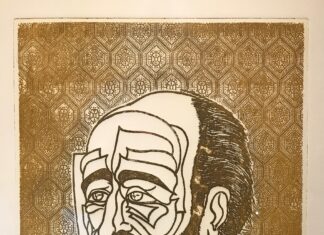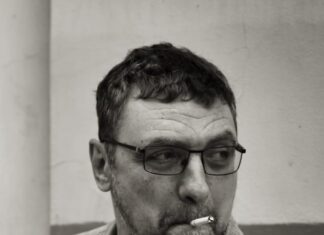By Aram Arkun
Mirror-Spectator Staff
RICHMOND, Va. — For the first time ever, the Hovhannes Tumanyan State Puppet Theater of Yerevan visited the United States this January. Its East Coast performance tour began on January 20 at St. James Armenian Church here and continued to various Armenian churches and communities in Washington, DC, Philadelphia, Fair Lawn, NJ, New York City and White Plains, NY, as well as Boston and Providence. A five-member ensemble of the group, including its artistic director, performed Robert Arakelian’s short story, “The Birthday Gift,” in Armenian, and Hovhannes Tumanyan’s “The Foolish Man” in English with floor puppets. The initial presentation was directed in particular at younger children. The four actors of the ensemble also sang a medley of lively Armenian traditional and folk songs.
The Richmond premiere was well attended, with some 65 Armenians in the audience, including a strong contingent of children. St. James pastor, Fr. Mesrob Hovsepyan, introduced the performance, explaining the importance of introducing various aspects of Armenian culture to Armenian children (and adults) in the United States. Artistic director and theater manager Ruben Babayan coordinated the sound system for the performance, providing the background music and some prerecorded dialogue for the puppets.
The two stories had important moral messages for children. The animals of “The Birthday Gift” showed the importance of giving and not just receiving, while the famous Tumanyan short story, “The Foolish Man,” based on a folk story, depicted a man who was unable to recognize and take advantage of good fortune.
The puppeteers skillfully manipulated their charges, and spoke or lip-synched their dialogue distinctly. Though the English dialogue was understandable, one suggestion for improvement would be to correct some aspects of English pronunciation and style in the prerecorded portions.
The four principal puppet actors were Aghasi Melkonyan, Inga Zahalyan, Naira Hakobyan and Robert Sargsyan. The youthful Aghasi Melkonyan said in an interview that he fell in love with puppetry as a youth, and soon graduated the Puppet Institute in Yerevan. He has been working as part of the Tumanyan Puppet Theater for 16 years. While this may be his first visit to the United States, he has traveled a lot with the puppet ensemble to many other countries. In particular, he enjoys participating in international festivals, as he can learn a lot from other puppeteers there, both technically and stylistically.









